11 houses from famous books in the UK and beyond
The literary locations behind world-famous novels
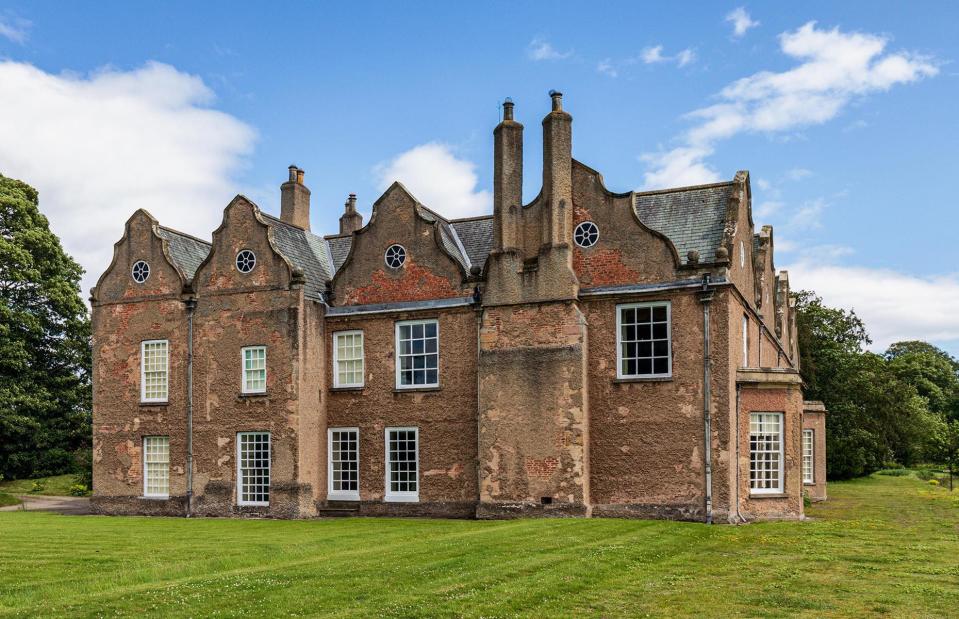
Jim Monk / Alamy Stock Photo
Writers often turn to their personal lives to draw inspiration for their stories, and locations seem to have a powerful pull. From the quaint Canadian cottage that inspired Anne of Green Gables to the spooky German castle which is thought to have sparked Mary Shelley's imagination when penning Frankenstein, read on as we step inside the hallowed homes behind some of the world's most treasured books...
Little Women, Massachusetts, USA
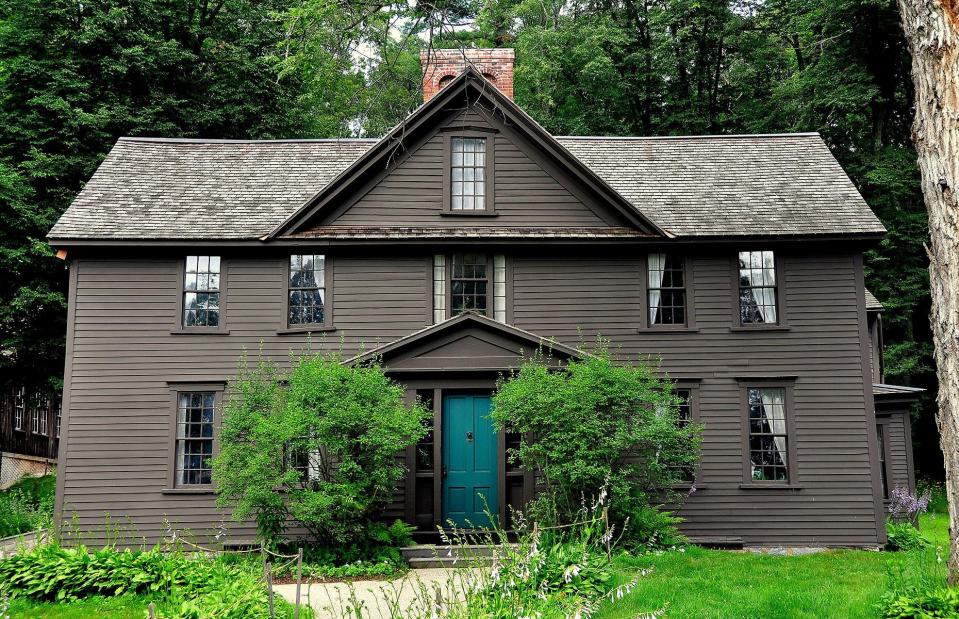
LEE SNIDER / Alamy Stock Photo
This quintessentially ‘New England’ clapboard-clad home was once the residence of the Alcott family, and where its most famous member, renowned author Louisa May Alcott, spent her formative years.
It was here that Louisa penned her acclaimed work, Little Women, based on her youth spent in Concord, Massachusetts. Today, the home is a museum, which attracts countless fans of Alcott’s works every year.
Little Women, Massachusetts, USA
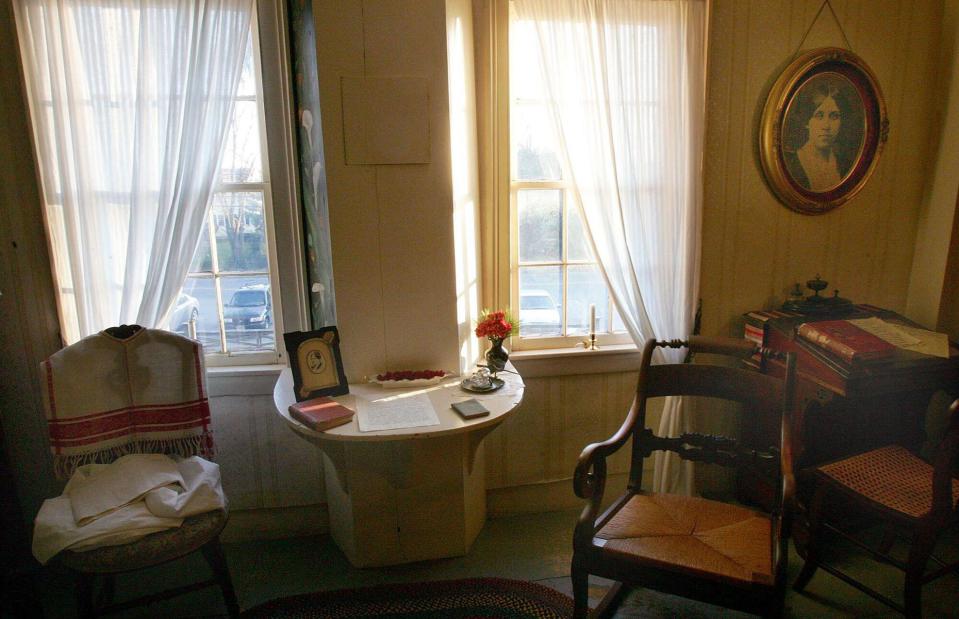
Associated Press / Alamy Stock Photo
The house itself was built in 1650 but was purchased by Louisa’s father, Amos Bronson Alcott, in 1857 for £474 ($954) – approximately £27,100 ($34.4k) in today's money. The property included 12 acres (4.9ha) of land which encompassed an expansive apple orchard, from which the estate derived its name.
The house became the Alcott family homestead for the next 20 years, and it was here that Louisa wrote Little Women at her famous 'shelf desk' (pictured) in 1868.
Little Women, Massachusetts, USA
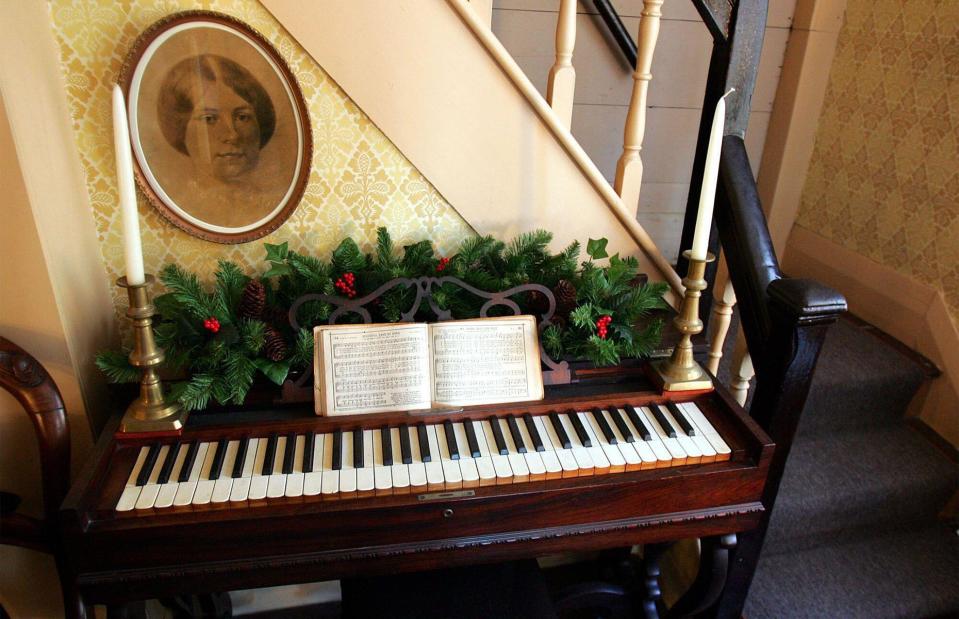
Associated Press / Alamy Stock Photo
Today, the rooms in Orchard House remain largely as they would have been during the family’s residency, and 80% of the furniture on display was owned by the Alcotts, including this melodeon belonging to Elizabeth Alcott (the inspiration for Little Women’s Beth), which sits below her portrait in the hall.
There have also been no structural changes to the home, allowing visitors to truly immerse themselves in Louisa’s inspirational surroundings.
Little Women, Massachusetts, USA
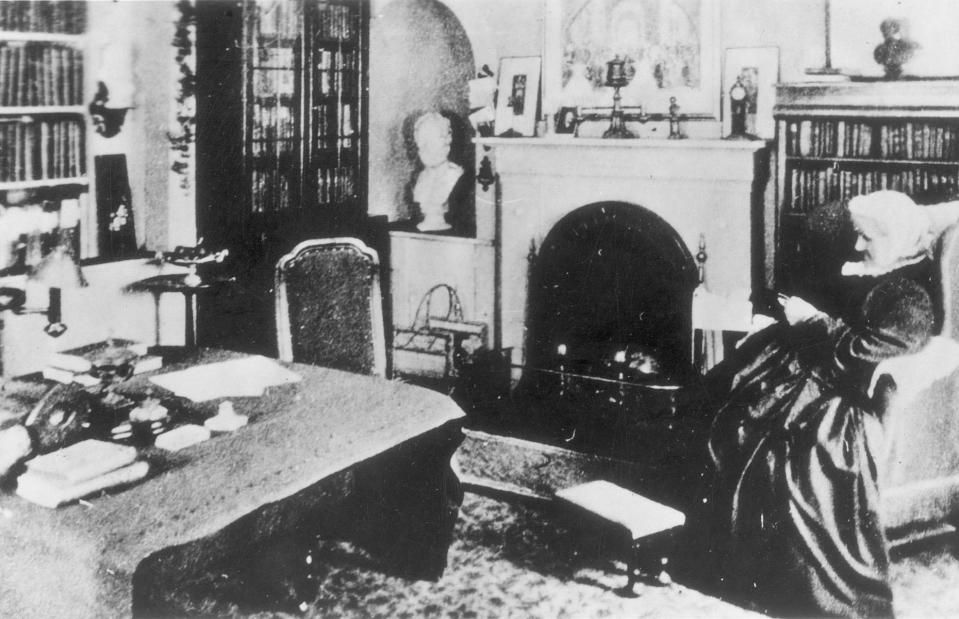
GRANGER - Historical Picture Archive / Alamy Stock Photo
In this archival image, Abigail May Alcott, or “Marmee” in the novel, sits comfortably in the family living room. The photo provides a rare glimpse back in time into the Alcott’s home as Louisa would have known it, and depicts a cosy family space in which one can easily imagine the March sisters gathering on a chilly evening.
Bleak House, Broadstairs, England
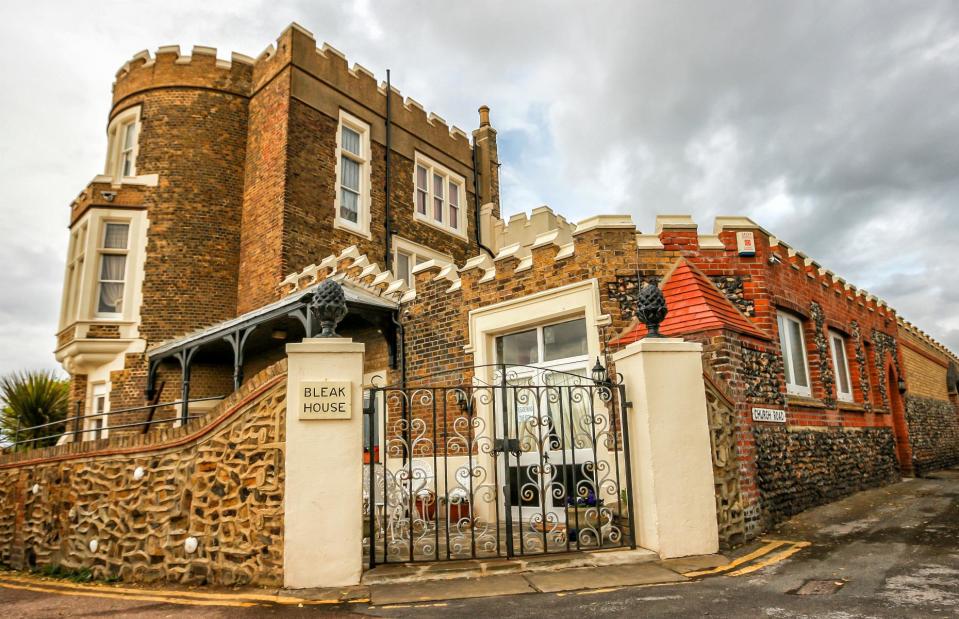
Cally Robin / Shutterstock
Originally known as Fort House, this striking coastal home in Broadstairs, Kent, was once the summer retreat of literary giant Charles Dickens. The celebrated author holidayed here from the 1830s to the 1850s, finding inspiration in the property's unique aesthetic...
Bleak House, Broadstairs, England
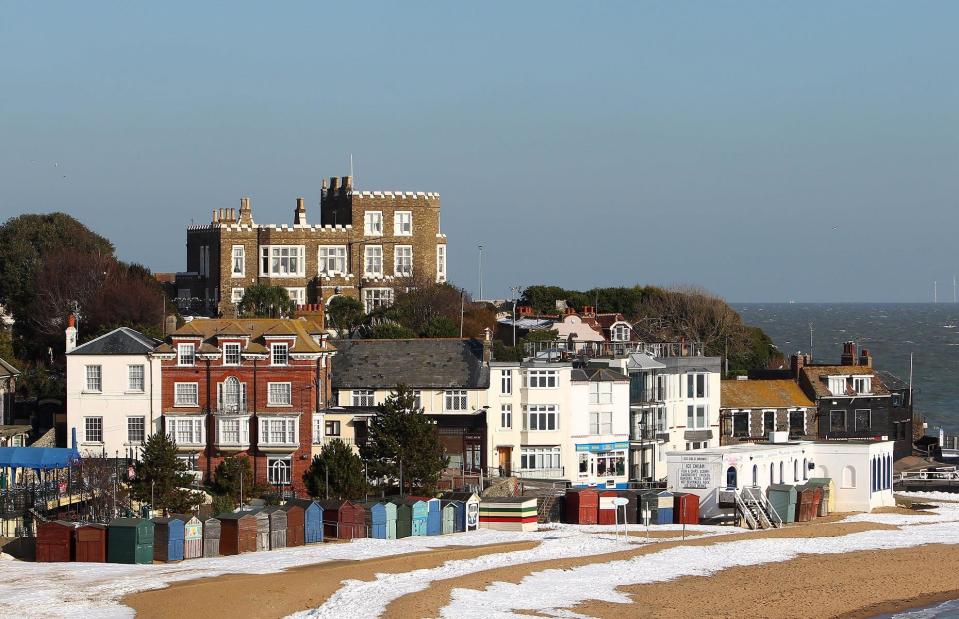
Gareth Fuller / PA Archive / PA Images
The fortress-like property towers above the ocean, offering uninterrupted views over Kent's Viking Bay. As well as penning the illustrious David Copperfield here, the summer home is said to have inspired the creation of one of Dickens' most celebrated literary works, Bleak House.
Bleak House, Broadstairs, England
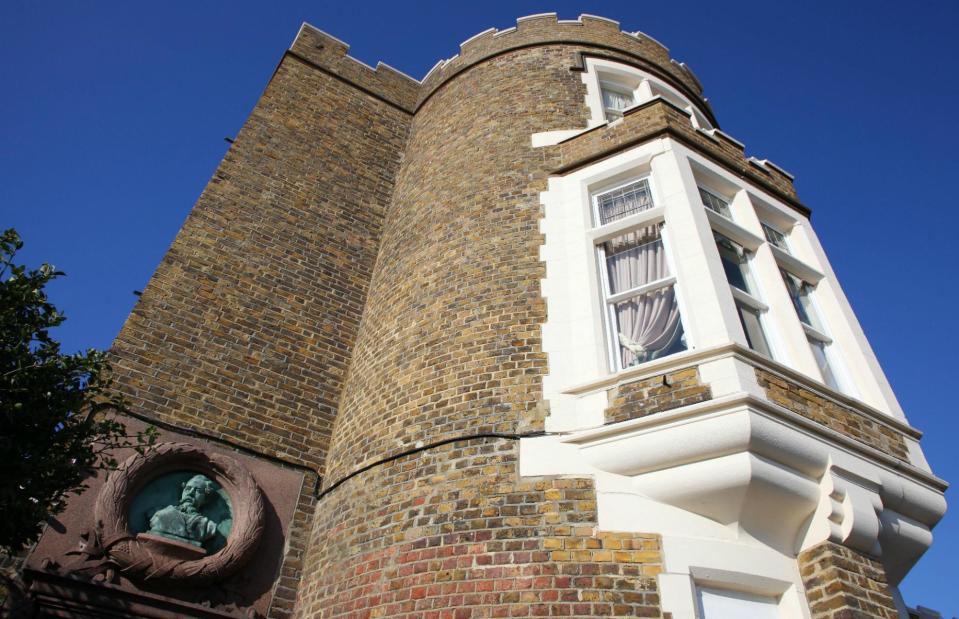
Gareth Fuller / PA Archive / PA Images
Many have drawn comparisons between the Broadstairs property and John Jarndyce’s iconic home, as depicted in Dickens’ writing: “It was one of those delightfully irregular houses where you go up and down steps out of one room into another, and where you come upon more rooms when you think you have seen all there are, and where there is a bountiful provision of little halls and passages, and where you find still older cottage-rooms in unexpected places with lattice windows.”
Bleak House, Broadstairs, England
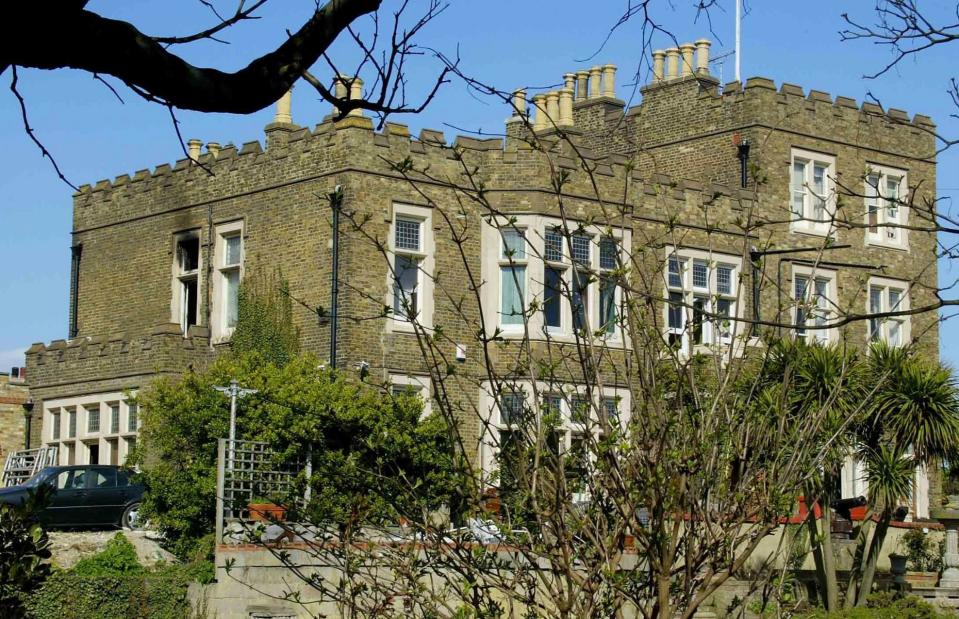
Gareth Fuller / PA Archive / PA Images
Following a fire in 2006, the home is now a bed and breakfast, where you can walk the very hallways that Dickens himself once meandered. In 1853, Fort House was renamed Bleak House in honour of one of the best-loved novels of the 19th century and to pay respects to the author.
Nineteen Eighty-Four, Jura, Scotland
![<p>Ronnie Leask / Wikimedia Commons [CC BY-SA 2.0]</p>](https://s.yimg.com/ny/api/res/1.2/yBCev.9ze0uZPnKzlpbFlg--/YXBwaWQ9aGlnaGxhbmRlcjt3PTk2MDtoPTYxOQ--/https://media.zenfs.com/en/loveproperty_uk_165/66914b93966de850c503f5cc38eb5a9e)
Ronnie Leask / Wikimedia Commons [CC BY-SA 2.0]
The prognostic novel Nineteen Eighty-Four was inspired by many things, including George Orwell's crippling tuberculosis. Yet one location, in particular, became Orwell's main muse.
Nineteen Eighty-Four, Jura, Scotland
![<p>Ken Craig / Wikimedia Commons [CC BY-SA 2.0]</p>](https://s.yimg.com/ny/api/res/1.2/FxnHXev5HNWDgtkmpoV2JQ--/YXBwaWQ9aGlnaGxhbmRlcjt3PTk2MDtoPTYxOQ--/https://media.zenfs.com/en/loveproperty_uk_165/2851b0d0b2b19f6d04cff803ee2800f8)
Ken Craig / Wikimedia Commons [CC BY-SA 2.0]
Ironically, this remote farmhouse on the quiet Scottish island of Jura was the place where Orwell created the Thought Police and Big Brother, for one of his greatest literary achievements. This isolated property fed Orwell's wild imagination in stark contrast to the novel's themes.
Nineteen Eighty-Four, Jura, Scotland
![<p>George Weir / Wikimedia Commons [Public domain]</p>](https://s.yimg.com/ny/api/res/1.2/vRv1xQP0rMBQogO_jlRYrA--/YXBwaWQ9aGlnaGxhbmRlcjt3PTk2MDtoPTYxOQ--/https://media.zenfs.com/en/loveproperty_uk_165/f91c2ee9c39d87411b41fc21c6b9cd80)
George Weir / Wikimedia Commons [Public domain]
Set in the Inner Hebrides, Barnhill was, and still is, almost entirely off-grid. From his desk by the window, Orwell looked out over the deserted landscape and imagined a world with no privacy or freedom. Here, he penned the entirety of his dystopian classic.
Nineteen Eighty-Four, Jura, Scotland
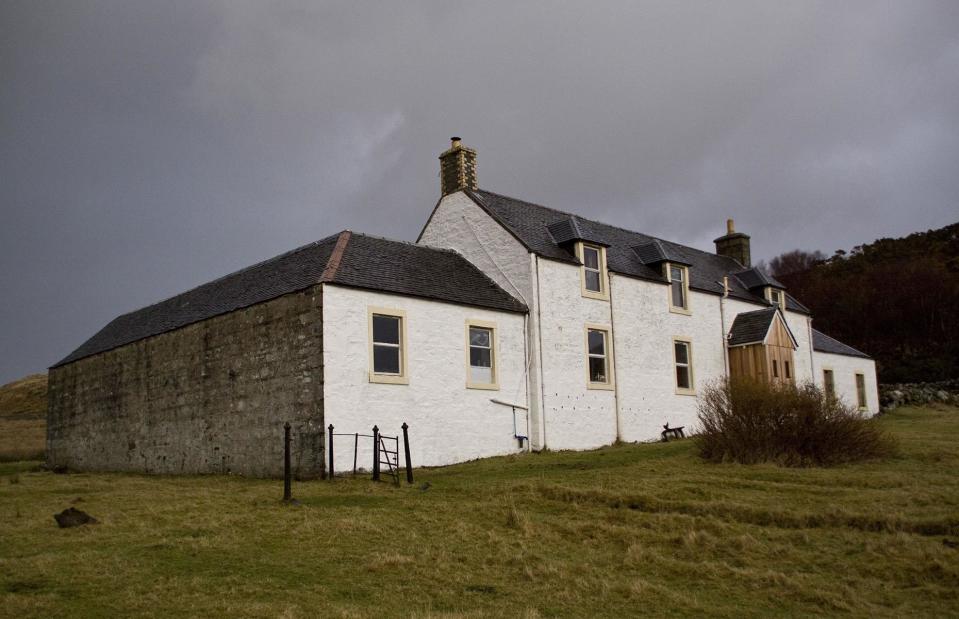
FLPA / Alamy Stock Photo
Fiercely private and wanting to maintain the home's tranquil beauty, Orwell was said to have shouted "cannibals" at anyone caught trespassing near his gate.
Remaining virtually untouched ever since, the home is still owned by the same family who rented the property to Orwell some 70 years ago. And although you can no longer stay at the house, The Orwell Society arranges trips to the home every one to two years according to The Guardian.
Anne of Green Gables, Prince Edward Island, Canada
![<p>Robert Linsdell / Wikimedia Commons [CC BY-SA 2.0]</p>](https://s.yimg.com/ny/api/res/1.2/EjPe9b6w_kj_4I7rwauVKQ--/YXBwaWQ9aGlnaGxhbmRlcjt3PTk2MDtoPTYxOQ--/https://media.zenfs.com/en/loveproperty_uk_165/a486e97591d6fc31679ae3b2f2d1139e)
Robert Linsdell / Wikimedia Commons [CC BY-SA 2.0]
In 1908, L.M. Montgomery published her most famous work, Anne of Green Gables; a story said to be inspired by her own rural childhood in Canada.
Anne of Green Gables, Prince Edward Island, Canada
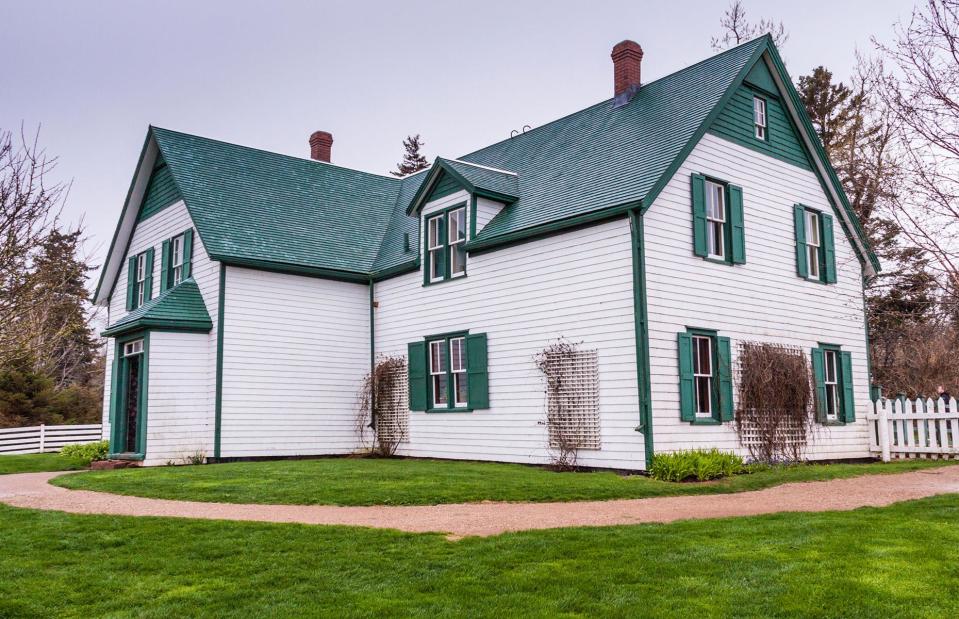
Janice and Nolan Braud / Alamy Stock Photo
Located on Canada's idyllic Prince Edward Island, it’s easy to see how Montgomery took inspiration from this stunning rural farmhouse. The ideal setting for a charming children’s tale, the property became the centrepiece of Anne Shirley's world.
Anne of Green Gables, Prince Edward Island, Canada
![<p>jockrutherford / Wikimedia Commons [CC BY-SA 2.0]</p>](https://s.yimg.com/ny/api/res/1.2/RYm3admOs5aggWxfw8Z2Vg--/YXBwaWQ9aGlnaGxhbmRlcjt3PTk2MDtoPTYxOQ--/https://media.zenfs.com/en/loveproperty_uk_165/93cec280751ef1d796ffab2781eb613c)
jockrutherford / Wikimedia Commons [CC BY-SA 2.0]
Montgomery lived in the stunning coastal cottage in the late 1800s and penned much of the Anne of Green Gables series here. Now a dedicated heritage museum, you can explore the rooms and gardens that influenced Montgomery's iconic children's stories.
Anne of Green Gables, Prince Edward Island, Canada
![<p>lovinkat / Wikimedia Commons [Public domain]</p>](https://s.yimg.com/ny/api/res/1.2/uPdTV4mIqZEapGNXeSb2pg--/YXBwaWQ9aGlnaGxhbmRlcjt3PTk2MDtoPTYxOQ--/https://media.zenfs.com/en/loveproperty_uk_165/309b6137343898b7c3536cb3d0c879b2)
lovinkat / Wikimedia Commons [Public domain]
Those who visit this iconic property can step straight into Anne Shirley's world and explore famed locations from the novel, including Haunted Woods and Balsam Hollow: “I'd go out into a great big field all alone or in the deep, deep woods and I'd look up into the sky—up—up—up—into that lovely blue sky that looks as if there was no end to its blueness.”
Little House on the Prairie, South Dakota, USA
![<p>Aaron Carlson / Flickr [CC BY-SA 2.0]</p>](https://s.yimg.com/ny/api/res/1.2/dh_kWKTcx8E2w8JCx0lAzg--/YXBwaWQ9aGlnaGxhbmRlcjt3PTk2MDtoPTYxOQ--/https://media.zenfs.com/en/loveproperty_uk_165/d8ca7a84ea5ac6566652e1498dd64768)
Aaron Carlson / Flickr [CC BY-SA 2.0]
Little House on the Prairie epitomises rural American life in the late 19th century and was inspired by the pioneer lifestyle of its author, Laura Ingalls Wilder. Constantly on the move, a whole host of Midwest homes influenced the iconic series. This is a replica of Wilder's birthplace in Wisconsin, as described in Little House in the Big Woods.
Little House on the Prairie, South Dakota, USA
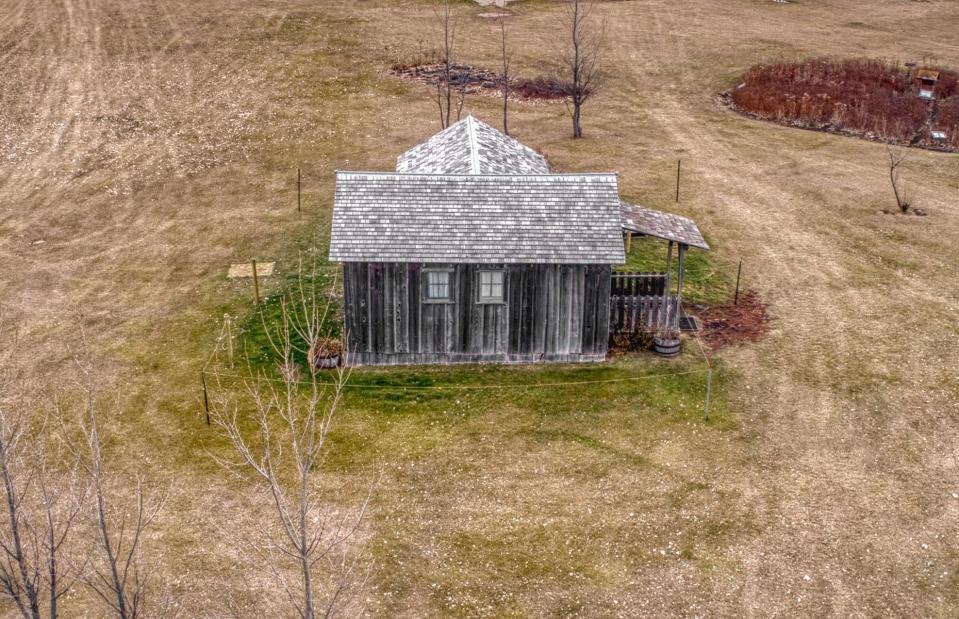
Jacob Boomsma / Shutterstock
In 1880, 13-year-old Laura Ingalls Wilder and her family moved to this cabin in South Dakota, fictionalised in the fifth book in the Little House series, By the Shores of Silver Lake. Her father, Charles, built the small shanty homestead himself, lured to the location by the plentiful supply of water.
Little House on the Prairie, South Dakota, USA
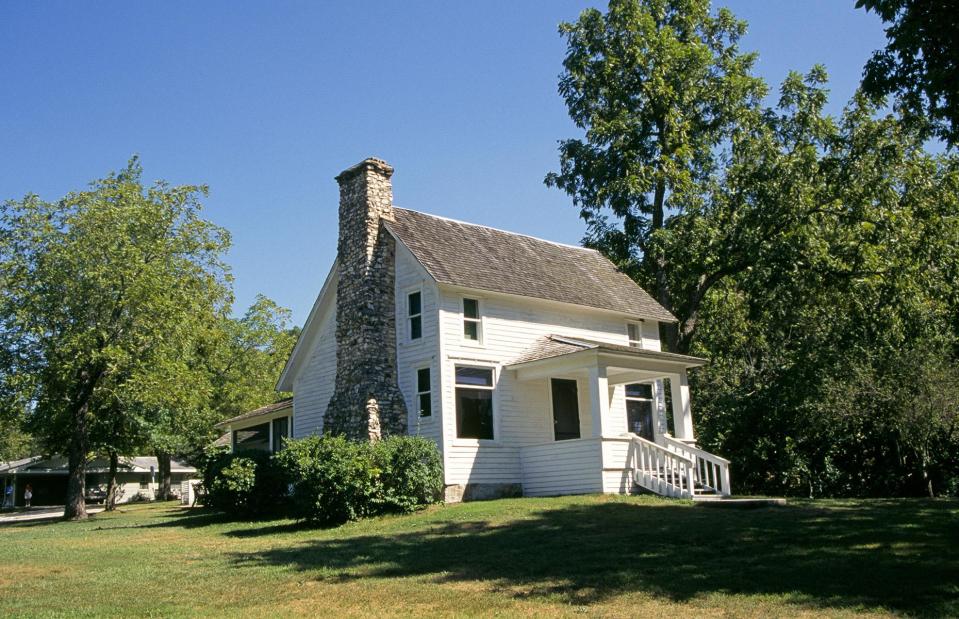
Buddy Mays / Alamy Stock Photo
Now with a husband and young daughter, Laura Ingalls Wilder moved to Mansfield, Missouri in 1894. The family cultivated 200 sprawling acres of farmland and eventually built a farmhouse, called Rocky Ridge Farm on the plot. It was here that Wilder began committing the Little House series to paper.
Jane Eyre, Peak District National Park, England
![<p>J147 / Wikimedia Commons [Public domain]</p>](https://s.yimg.com/ny/api/res/1.2/q6mgWmFd6bdh9myr1BRqGA--/YXBwaWQ9aGlnaGxhbmRlcjt3PTk2MDtoPTYxOQ--/https://media.zenfs.com/en/loveproperty_uk_165/5f2a8632f51b311aae54039159a0b5aa)
J147 / Wikimedia Commons [Public domain]
This stunning historic property in the heart of the Peak District National Park was a major influence on Charlotte Brontë, who visited the home several times in 1845. Known as North Lees Hall, the building became the inspiration for Thornfield Hall, the iconic residence of Edward Rochester in Brontë’s most enduring novel, Jane Eyre.
Jane Eyre, Peak District National Park, England
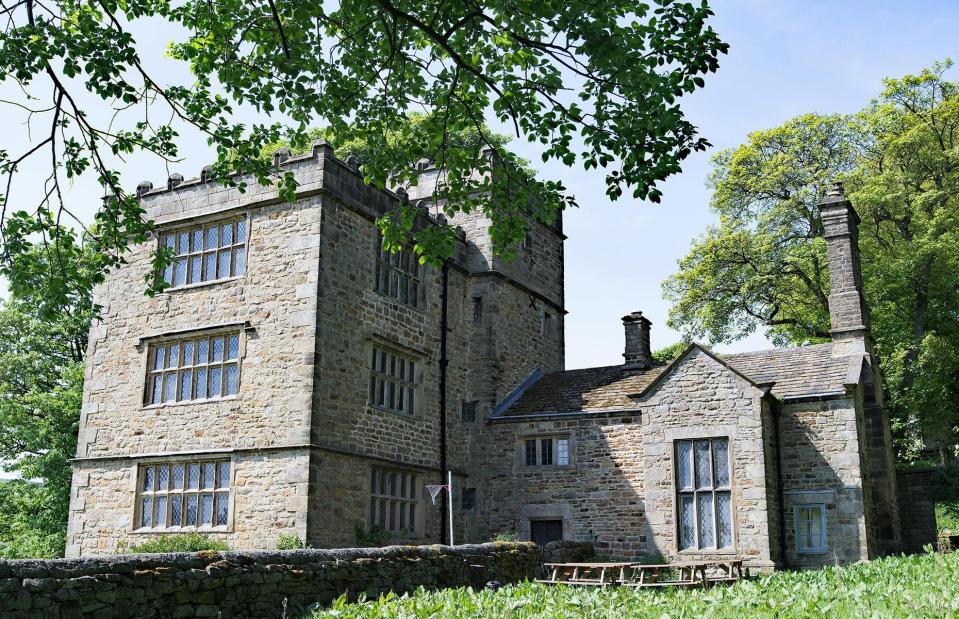
Frog surfacing beside its spawn / Alamy Stock Photo
Surrounded by the stunning rolling hills of the Peak District National Park, North Lees Hall beautifully captured the solitude of country life in England during the 19th century. In the book, Brontë describes the hall quite suitably: “three storeys high; a gentleman’s manor house; battlements round the top gave it a picturesque look."
Jane Eyre, Peak District National Park, England
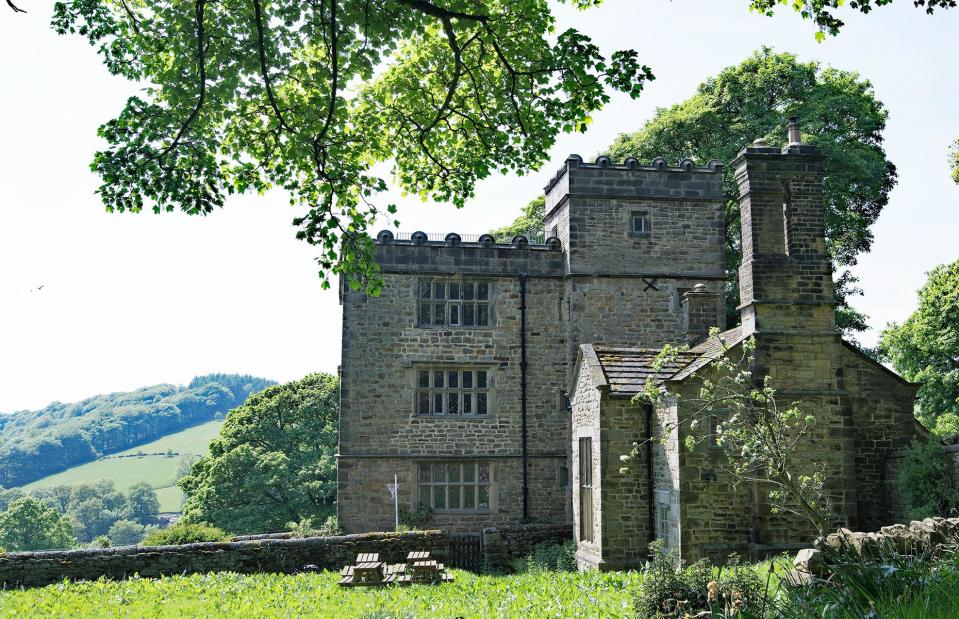
Frog surfacing beside its spawn / Alamy Stock Photo
Though not open to the public, this enchanting property is a truly captivating piece of literary history. The author even named her acclaimed novel after North Lees Hall's architect, Robert Eyre.
Jane Eyre, North Yorkshire, England
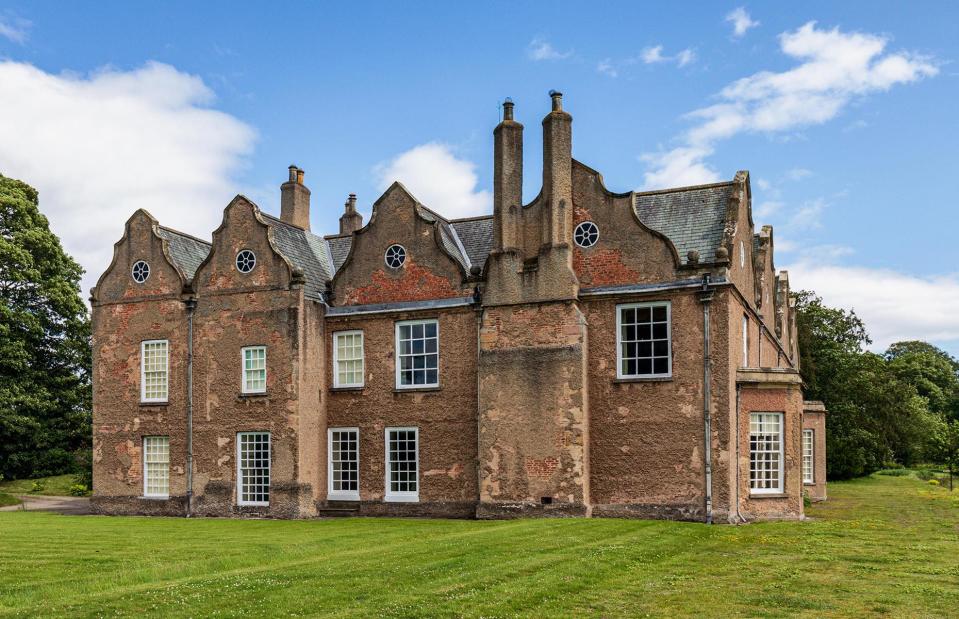
Jim Monk / Alamy Stock Photo
A further grand Yorkshire property that is said to have inspired Charlotte Brontë's timeless novel, Norton Conyers was visited numerous times by the author in 1839, some eight years before the book was published.
Brontë had heard stories about a mad woman confined to the building’s eerie attic, a tale that is thought to have inspired her infamous character, Bertha Mason.
Jane Eyre, North Yorkshire, England
![<p>David Rogers / Wikimedia Commons [CC BY-SA 2.0]</p>](https://s.yimg.com/ny/api/res/1.2/jIfZgzl7FhSDk5oFIdLg4g--/YXBwaWQ9aGlnaGxhbmRlcjt3PTk2MDtoPTYxOQ--/https://media.zenfs.com/en/loveproperty_uk_165/ad0457712702b345138d37ca075d6f9c)
David Rogers / Wikimedia Commons [CC BY-SA 2.0]
Beyond its connection to a beloved novel, Norton Conyers is a Grade II-listed property, recognised as having 'special interest' to the United Kingdom. Two kings, Charles I and James II, both spent the night here and many of its 18th-century furnishings, including paintings, have been well maintained.
Jane Eyre, North Yorkshire, England
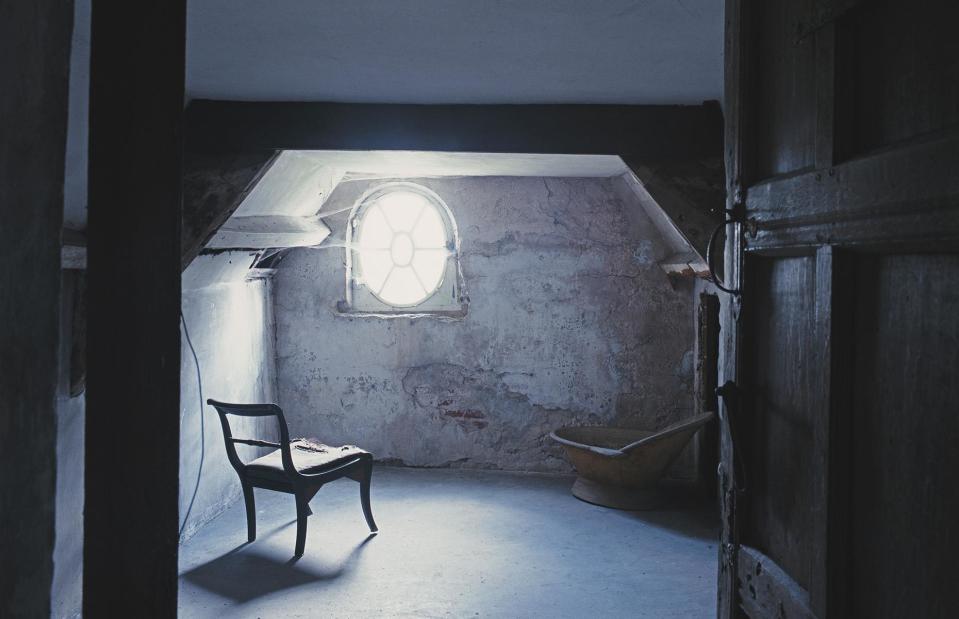
Christopher Simon Sykes / Contributor / Getty Images
In 2004, a hidden stairway was discovered at Norton Conyers, further linking the historic property to Thornfield Hall. The attic remains intact to this day, though there is no public access to the space, which helped create one of the greatest literary twists of all time.
Jane Eyre, North Yorkshire, England
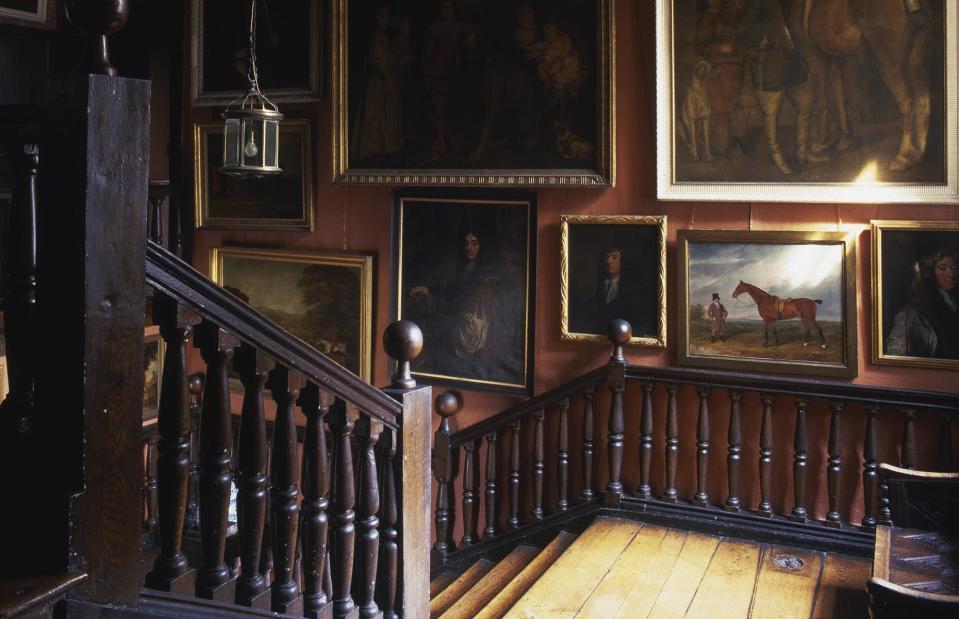
Christopher Simon Sykes / Contributor / Getty Images
After an extensive renovation, the house and gardens reopened to the public in the spring of 2024, allowing guests to stroll through one of the most famous landmarks in literary history.
The Tale of Peter Rabbit, Lake District, England
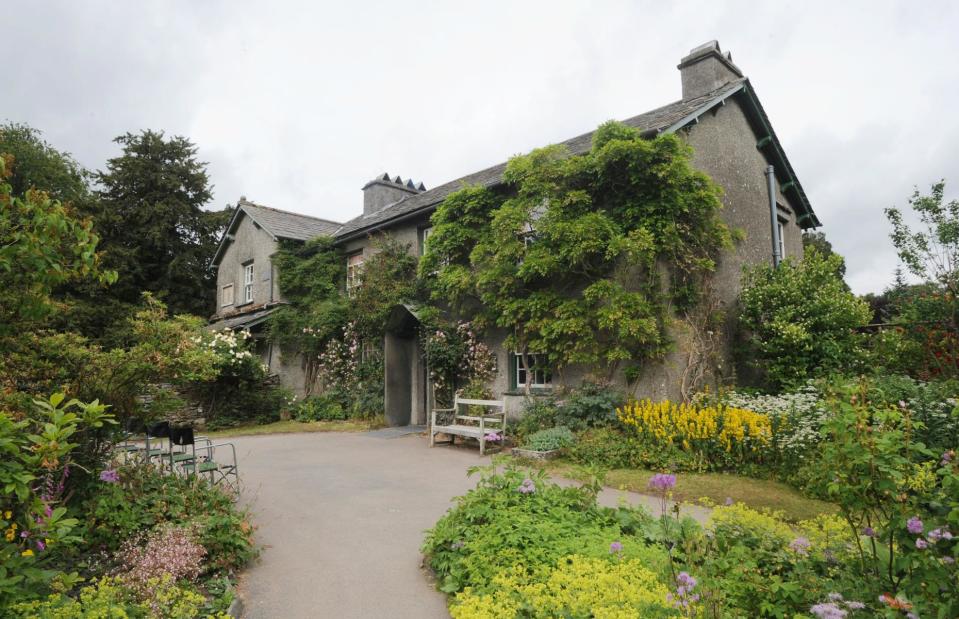
Anna Gowthorpe / PA Archive / PA Images
When you take a look at the chocolate-box childhood home of Beatrix Potter, it's easy to see where the inspiration for her most iconic character was born...
The Tale of Peter Rabbit, Lake District, England
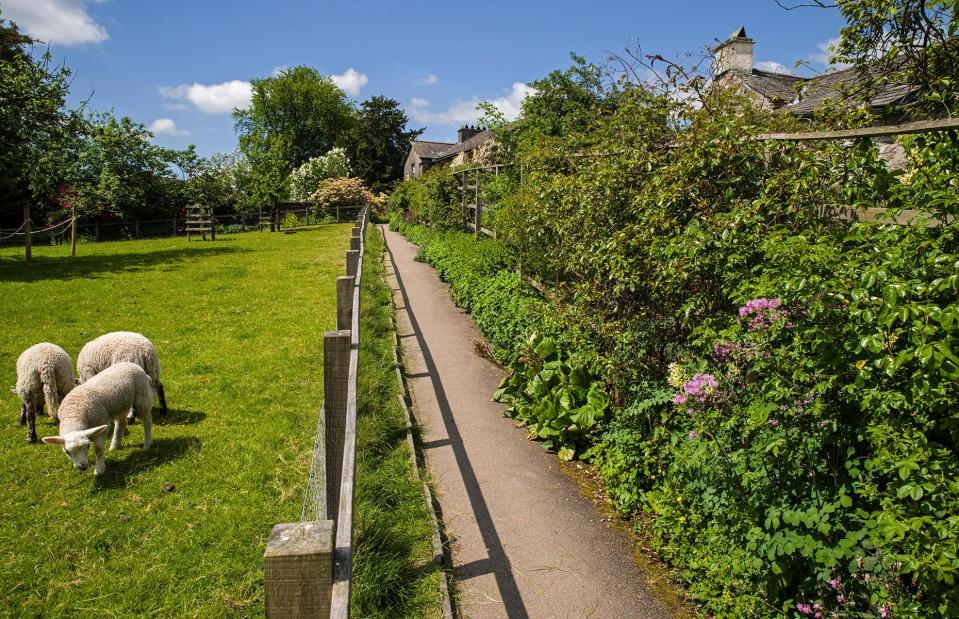
Chris Dorney / Alamy Stock Photo
That's right, the beautiful gardens and surrounding landscape of Beatrix Potter's former home were the main inspiration for the adventures of mischievous Peter Rabbit.
The Tale of Peter Rabbit, Lake District, England
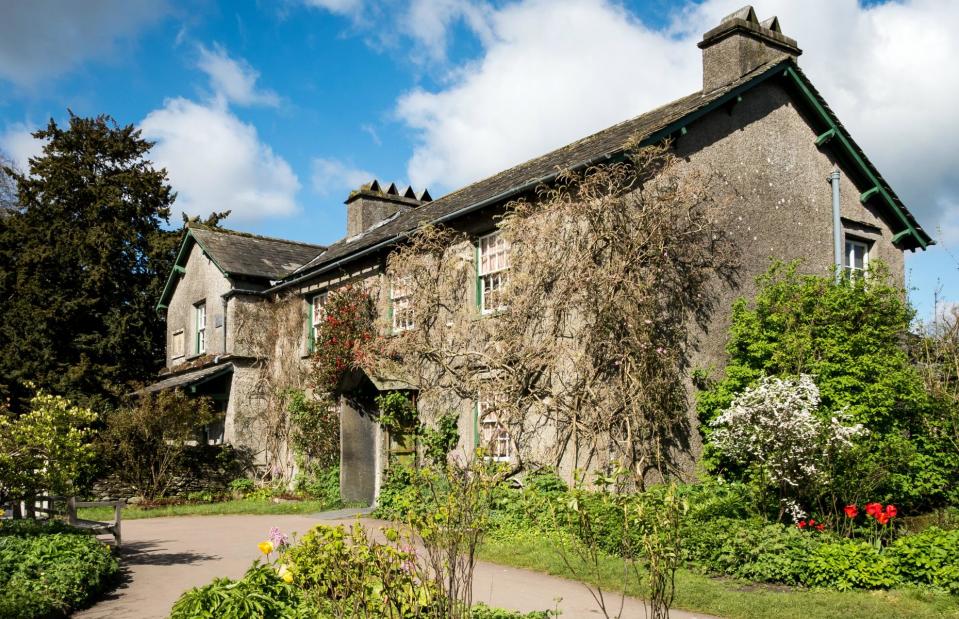
pxl.store / Shutterstock
It's easy to imagine mischievous Peter hopping around this quaint English garden, and you can almost see Beatrix Potter herself, sitting by her window watching the animals play outside.
The Tale of Peter Rabbit, Lake District, England
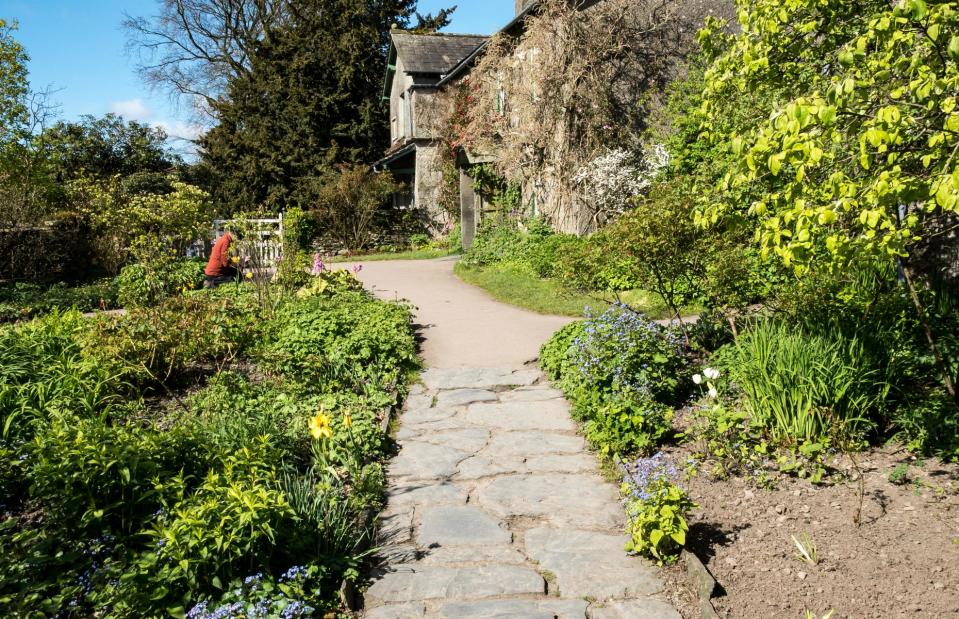
pxl.store / Shutterstock
Known as Hill Top, this quintessentially English property in the heart of the Lake District is now owned by the National Trust and is open for visits by fond fans, eager to see the dwelling that inspired some of literature's best-loved characters.
Harry Potter and the Philosopher's Stone, Edinburgh, Scotland
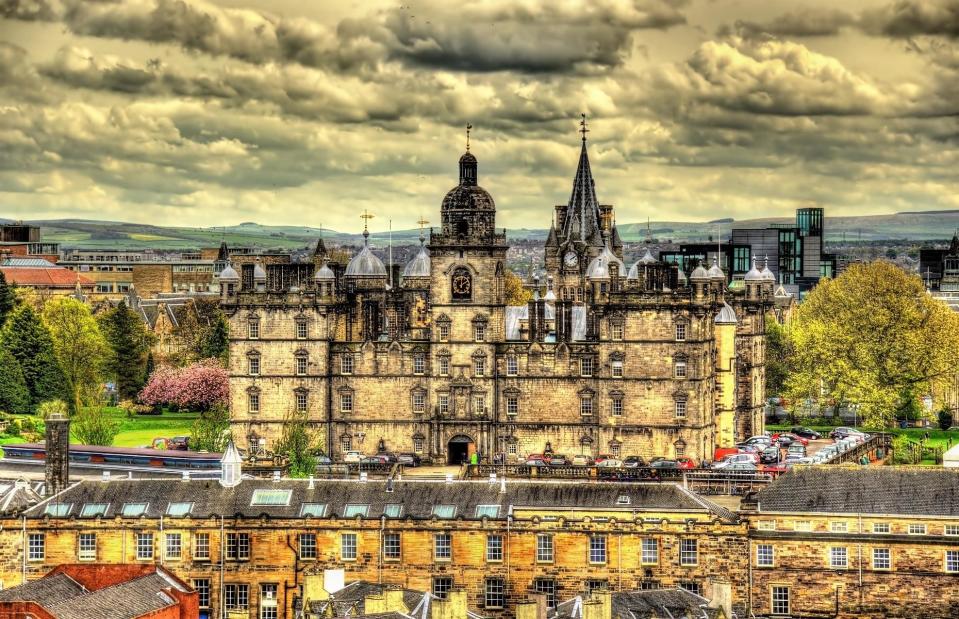
Leonid Andronov / Shutterstock
Located in historic Edinburgh, Scotland, it's easy to see how this dramatic castle-like property ignited an idea in the mind of J. K. Rowling. Though not technically a home, this grand building was designed by Renaissance architect William Wallace in the mid-1600s. Initially opened as a hospital, the building is now home to the prestigious George Heriot's School.
Harry Potter and the Philosopher's Stone, Edinburgh, Scotland
![<p>Dan / Flickr [CC BY-SA 2.0]</p>](https://s.yimg.com/ny/api/res/1.2/Izw0H5VLNwUOpBifWFlDiA--/YXBwaWQ9aGlnaGxhbmRlcjt3PTk2MDtoPTYxOQ--/https://media.zenfs.com/en/loveproperty_uk_165/d4c8f3ed2af5f601cdc2768b16e29df6)
Dan / Flickr [CC BY-SA 2.0]
Founded by Heriot, who had no children of his own, the school was set up to help families similar to his own, the children of deceased tradesmen facing hardship. Funds came from the majority of Heriot's fortune, worth tens of millions today.
Harry Potter and the Philosopher's Stone, Edinburgh, Scotland
![<p>Yisong Yue / Flickr [CC BY-SA 2.0]</p>](https://s.yimg.com/ny/api/res/1.2/Zo2hj9C14NkawCqowThRWw--/YXBwaWQ9aGlnaGxhbmRlcjt3PTk2MDtoPTYxOQ--/https://media.zenfs.com/en/loveproperty_uk_165/9feca4c97a886e617f8b3fb7f7bb44cf)
Yisong Yue / Flickr [CC BY-SA 2.0]
J. K. Rowling is rumoured to have taken inspiration from the property's dominant turrets and towers for her famed fictional institution, Hogwart’s School of Witchcraft and Wizardry: "A huge, rambling, quite scary-looking castle, with a jumble of towers and battlements."
Speaking in 2002, Rowling said: "Hogwarts is a very real place to me... I've always imagined it to be in Scotland... which... it was never made explicit in the books but the British reader will know that because if you do travel for a day from King's Cross Station in London and you go north, you end up in Scotland. So it was always supposed to be here."
Harry Potter and the Philosopher's Stone, Edinburgh, Scotland
![<p>Dave Morris / Flickr [CC BY 2.0]</p>](https://s.yimg.com/ny/api/res/1.2/PWUpGHqNT0.XpfQTws4_ow--/YXBwaWQ9aGlnaGxhbmRlcjt3PTk2MDtoPTYxOQ--/https://media.zenfs.com/en/loveproperty_uk_165/e1f37a1615613fe9f772193eb01f2ac9)
Dave Morris / Flickr [CC BY 2.0]
Fans have enjoyed finding similarities between George Heriots and Hogwarts, delighting in the four houses the boys would have been sorted into: Lauriston is Slytherin; Greyfriars represents Hufflepuff; Raeburn is Gryffindor, named after a famous former pupil Sir Henry Raeburn who was an acclaimed portrait painter; and Castle stands as Ravenclaw.
By night the building is hauntingly magical, commanding the landscape in the same way that Hogwarts is said to in Rowling's adored Harry Potter series.
Frankenstein, Hesse, Germany
![<p>Zoppo59 / Wikimedia Commons [CC BY-SA 4.0]</p>](https://s.yimg.com/ny/api/res/1.2/XLDvQ1Bum45r74DnBy3QGA--/YXBwaWQ9aGlnaGxhbmRlcjt3PTk2MDtoPTYxOQ--/https://media.zenfs.com/en/loveproperty_uk_165/fa3916ea89baec06ff5bd0ac788da495)
Zoppo59 / Wikimedia Commons [CC BY-SA 4.0]
With a name like Frankenstein’s Castle, it’s no mystery which famous gothic horror novel this imposing edifice inspired. The abandoned castle dates to the 1600s, and with its dramatic turrets and crumbling ramparts, would certainly make an appropriate backdrop for a historical thriller.
Frankenstein, Hesse, Germany
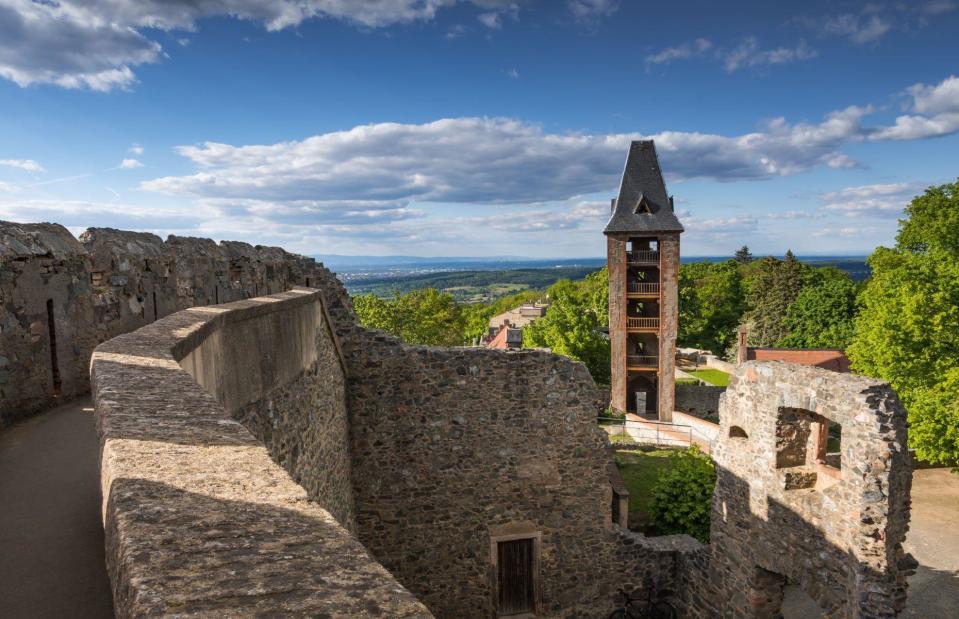
Conny Pokorny / Shutterstock
The castle was formerly owned by Johann Konrad Dippel, a noted alchemist who was born in the Burg of Frankenstein in 1673, and was rumoured to conduct gruesome electrical experiments and concoct strange potions. Dippel is believed to have inspired Shelley’s 1818 novel, which similarly features a ‘mad scientist’ conducting a desperate experiment to reproduce human life.
Frankenstein, Hesse, Germany
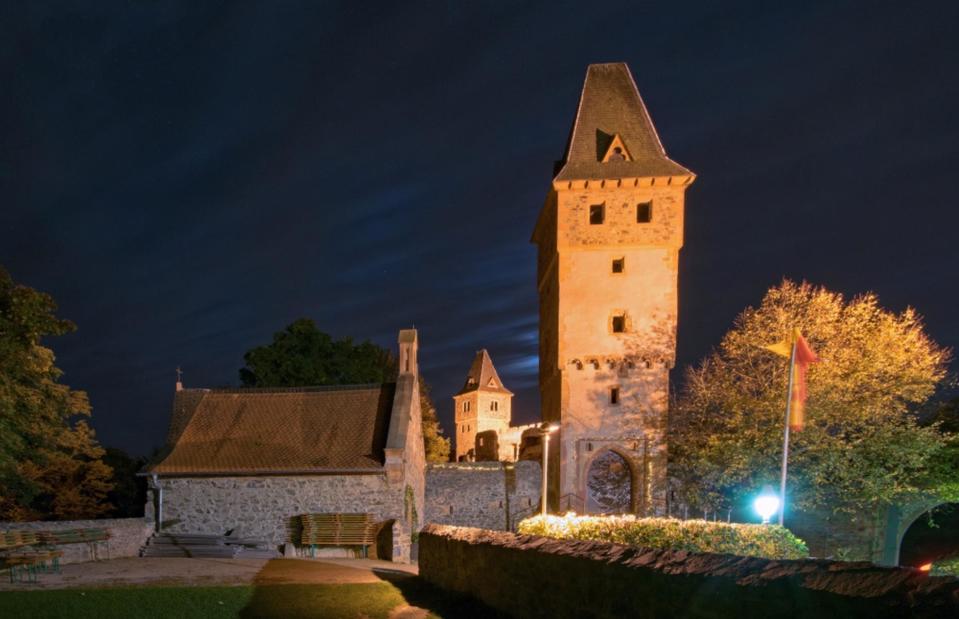
Lapping Pictures / Shutterstock
Nestled in the mountains of Mühltal, Hesse, the castle is now abandoned and decaying, with its semi-exposed interior at the mercy of the elements. With its two towers, chapel, and restaurant still intact, the site has remained a popular tourist attraction, however, from 2024, Castle Frankenstein will be closed for renovation.
Frankenstein, Hesse, Germany
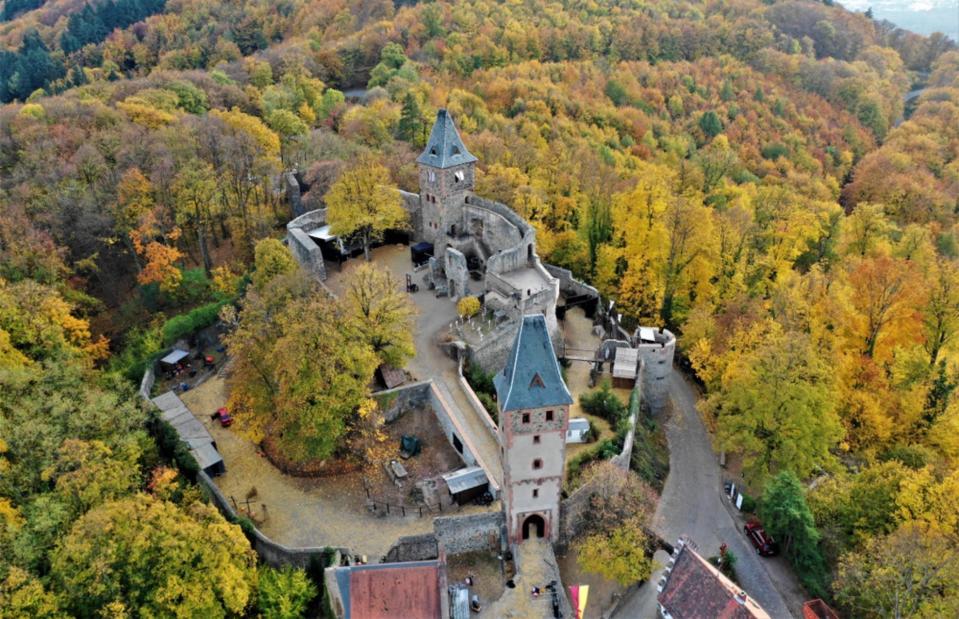
f4 Luftbilder / Shutterstock
As one might imagine, Castle Frankenstein is usually a particularly hot destination around Halloween, when the Burg Frankenstein Halloween party attracts visitors dressed as ghosts, vampires, werewolves and witches for various spooky-themed events.
The legendary event, which started in 1977, will be finding a temporary new home at Königstein Castle while renovations take place.
Rebecca, Cornwall, England
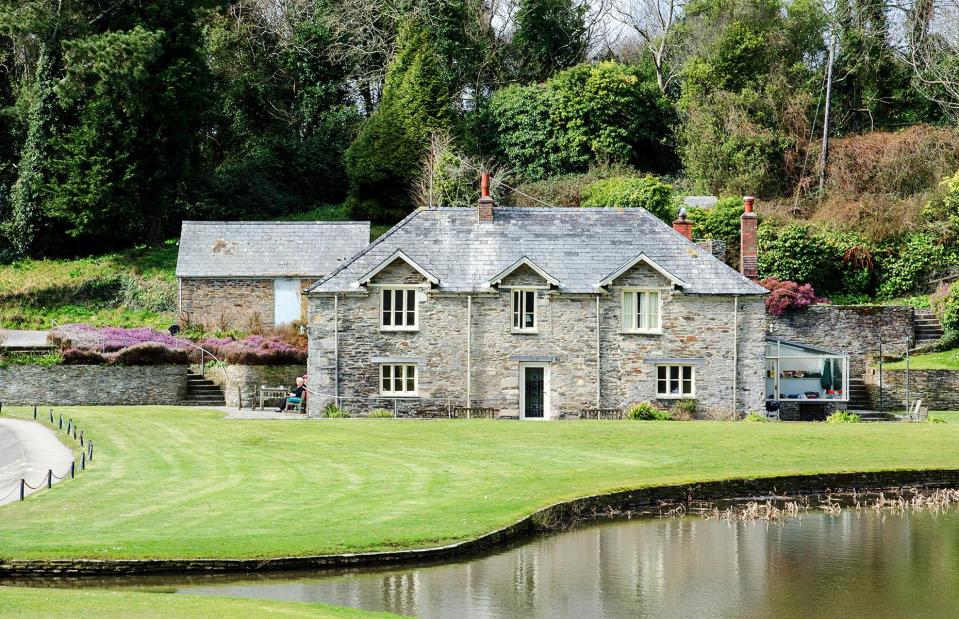
Kevin Britland / Alamy Stock Photo
This historic estate on the coast of Cornwall has been the family seat of the Rashleighs since the 16th century. Known as Menabilly, the Grade II-listed country house is believed to have been the inspiration behind Manderley in Daphne du Maurier’s 1938 novel, Rebecca.
Rebecca, Cornwall, England
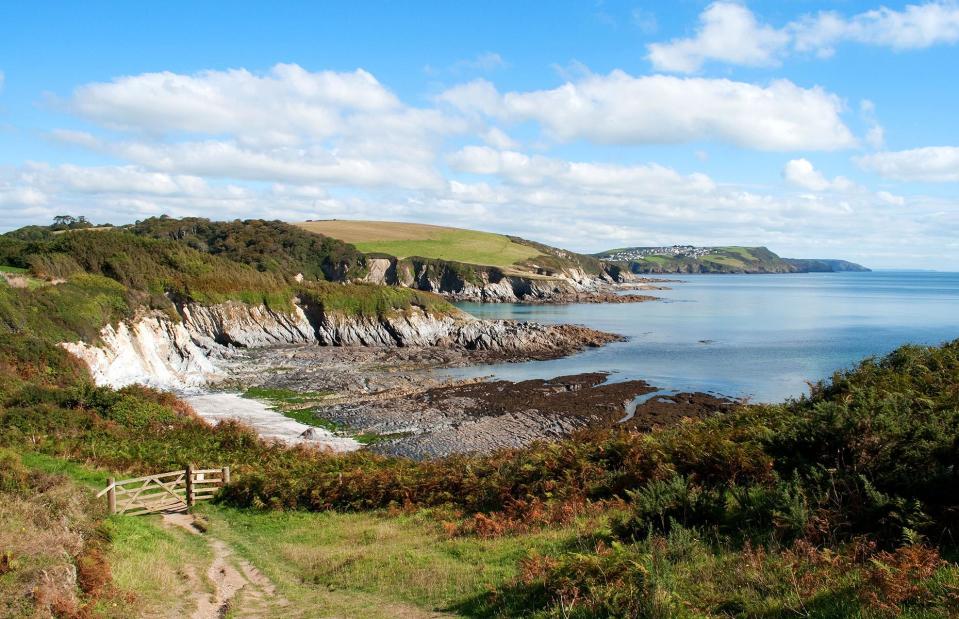
Kevin Britland / Alamy Stock Photo
Like Manderley, Menabilly is set back in the woods, near the sea but not visible from the shore. The remote setting provided ample opportunity for the haunting encounters which dominate the gothic novel.
Rebecca, Cornwall, England
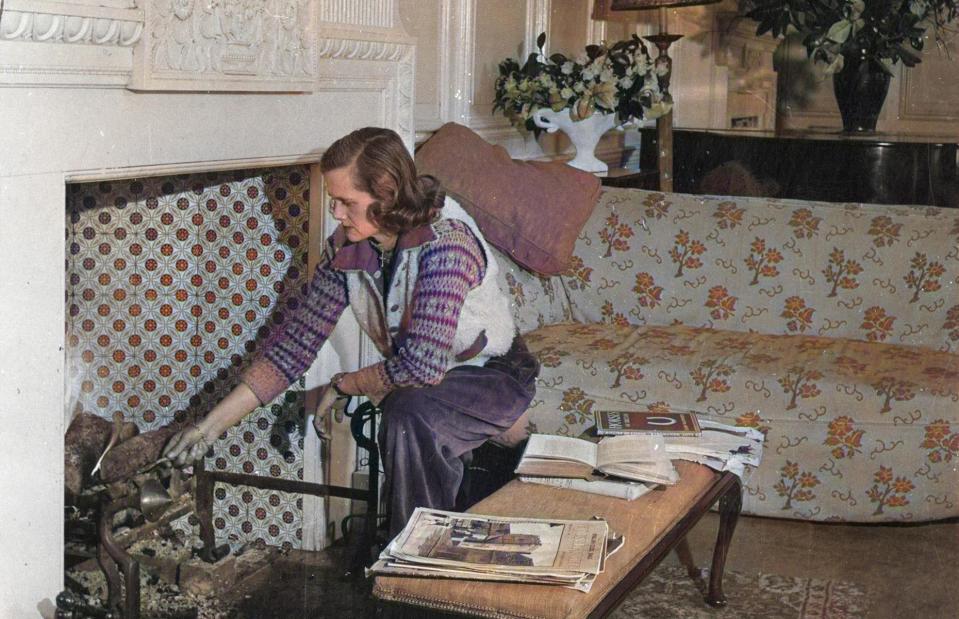
Chroma Collection / Alamy Stock Photo
Du Maurier, pictured here in the home, had long coveted Menabilly, which is a sprawling stone structure in the Georgian style. However, it was not until 1943, five years after she penned Rebecca, that du Maurier became the new tenant of what was by then a very dilapidated and neglected building.
Rebecca, Cornwall, England
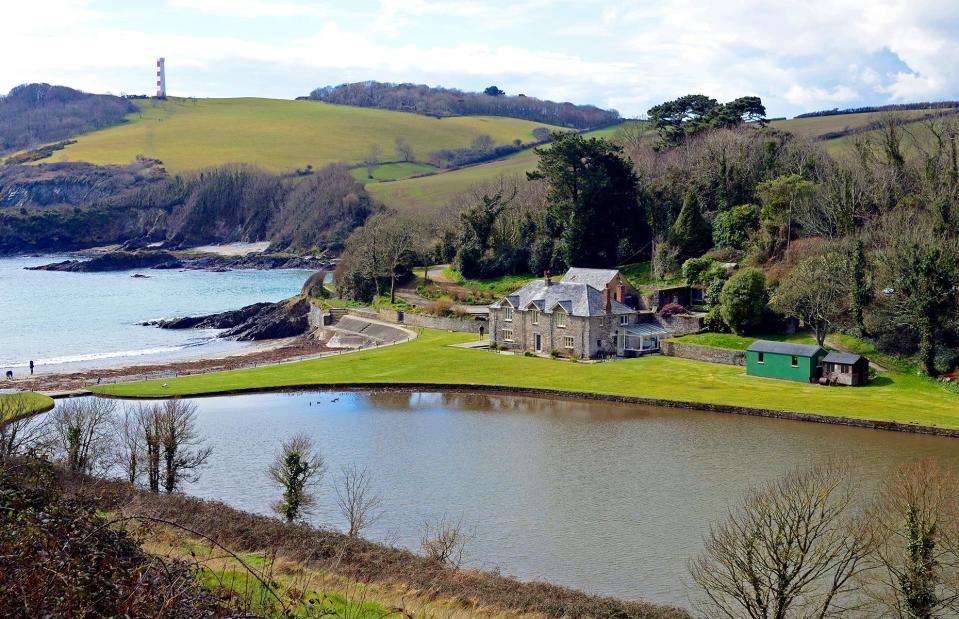
Kevin Britland / Alamy Stock Photo
Du Maurier set about lovingly restoring the home before returning it to the Rashleighs at the end of her tenancy in 1969. Today, the majority of the house and grounds remain under private ownership, although three cottages on the estate are available as holiday lets.


